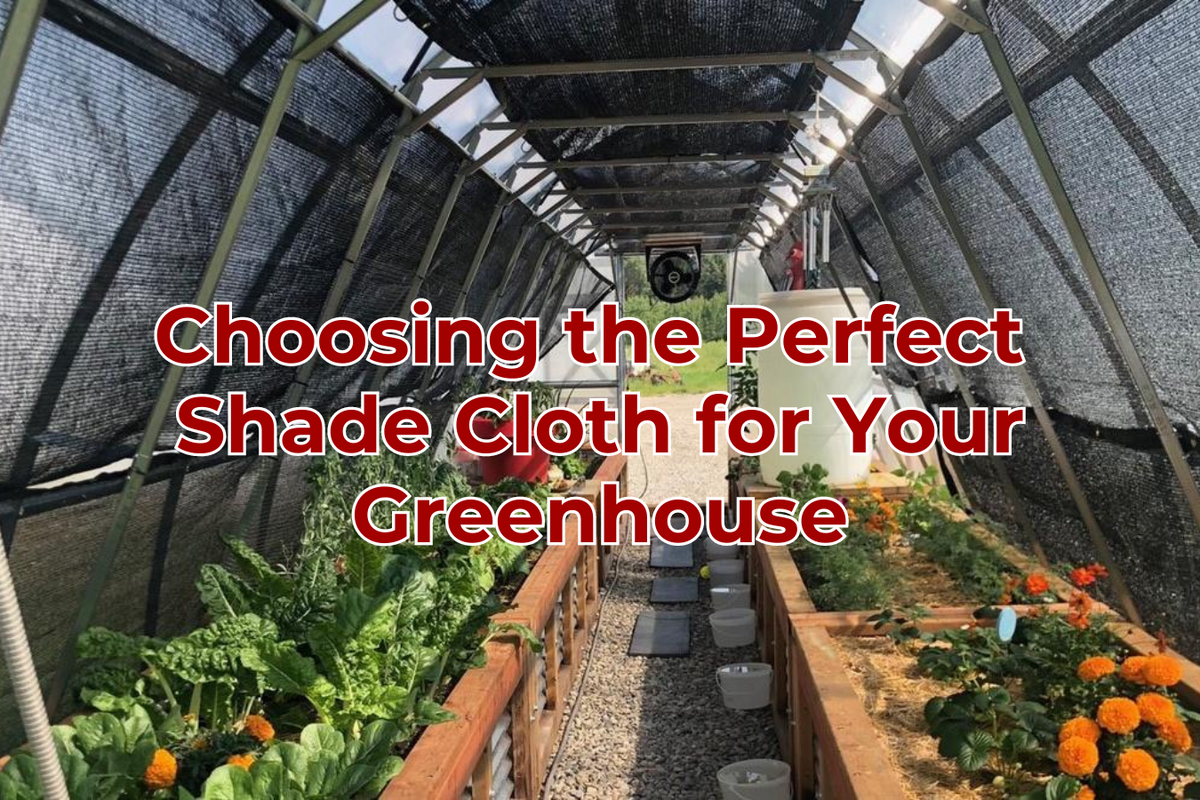
Choosing the Perfect Shade Cloth for Your Greenhouse
|
|
Time to read 3 min
|
|
Time to read 3 min
Keeping greenhouse plants shaded is a common problem in the greenhouse game. One of the best solutions to this issue is using a shade cloth to ease the sunlight burden off your plants. Think of shade cloths as harmonious companions of your plant babies - they let in the right amount of sunlight necessary for plant growth.
There are multiple shade cloth options on the market, so making the right choice for your greenhouse can be a bit tricky. But don't worry, I've got you covered! I’ll go through all the necessary details you need to know before making a choice.
The type of material used to construct a shade cloth is important to consider as it directly impacts its durability and effectiveness. Most shade cloths are made from materials like
The most popular option is polyethylene (PE) , which is very affordable and offers excellent UV protection for plants.
Polypropylene (PP) is arguably the strongest shade cloth material. So, if your DIY backyard greenhouse is regularly hit by strong winds, polypropylene is a great option with its wind resistance and durability. Polyester, is a pretty good option as well, it’s very sturdy and allows sufficient light to reach your plants.
This is all about how much sunlight can pass through the fabric. If your plants can withstand the sun and only need moderate shading, a 50% shade cloth is sufficient. If you are growing plants like herbs, leafy greens, and other shade-loving veggies and flowers, you’ll need higher-density cloths like 70% or 80%.
Just like the clothes we wear, darker varieties of shade cloths absorb more heat than others. This means they are capable of providing more warmth and shade than the lighter ones that reflect the heat.
Black shade cloths are ideal for areas with intense sunlight and scorching temperatures, as they effectively block out more sunlight and retain heat, creating a cooler environment underneath.
Green shade cloths are often chosen by gardeners who are looking for a balance between light transmission and shade. Additionally, their green color tends to match what’s going on inside the greenhouse making for an overall natural appearance.
White shade cloths are most suitable when you need to reflect the heat and maintain the quality of the light spectrum. They help keep the growing area cooler while still allowing sufficient light for plant growth, making them a better option for areas with less intense sunlight.
When it comes to the most lightweight and flexible option, you need to go with a knitted shade cloth.
Knitted cloths are perfect for letting air and water through because they are made with interlocking threads. This construction makes them very durable as they are tear resistant.
Woven options are also quite durable. As a matter of fact, they are usually more durable than knitted ones. Woven shade cloths will stand up pretty well against wind and hail. Think about how much ventilation and wind protection your greenhouse needs to help you decide between the two.
Your shade cloth must be properly attached to the greenhouse structure , nice and taut. Install it without sagging!
Make sure to buy some bungee cords, clips, and fastening hooks to properly secure it to your DIY greenhouse kit.
Here’s a pro tip: if you know you need to move the shade cloth as the seasons or your greenhouse layout change, make it easy to fasten and unfasten, less trouble come work day.
If you purchased rolls without a wrap, then you will also need to add grommets to the edges, watch the video below to find out how to install grommets to your shade cloth rolls.
There you have it! Knowing this, choosing the right shade cloth for your DIY backyard greenhouse should not be an issue. Think about what material, build, and color your greenhouse needs based on your plants and environment. If you get the wrong one, you may have to visit the store twice. And remember to install the shade cloth properly, don’t cut corners.


